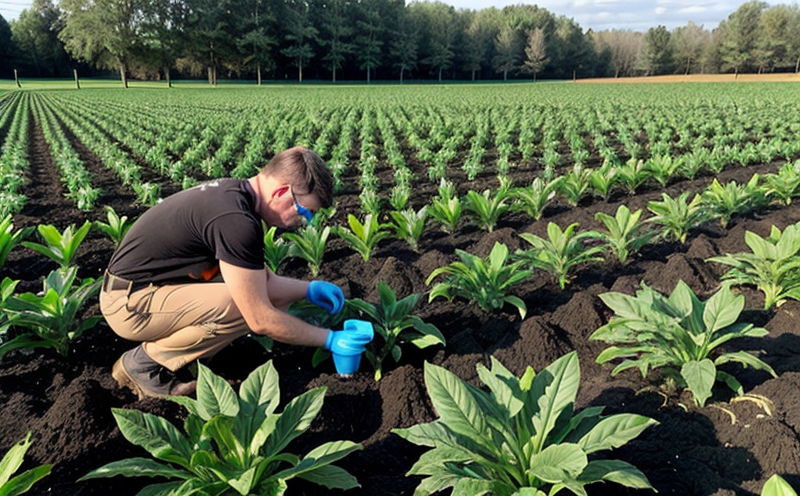Fertilizer Efficiency Testing (Crop Response Assay)
The Crop Response Assay, also known as Fertilizer Efficiency Testing (FET), is a critical tool in agricultural and forestry testing that assesses the effectiveness of fertilizers on crop growth. This service plays an integral role in optimizing nutrient management and enhancing yield efficiency. By evaluating how well specific nutrients are utilized by crops under various environmental conditions, this test helps stakeholders make informed decisions about fertilizer selection, application rates, and timing.
Understanding crop responses to different types of fertilizers is crucial for sustainable agricultural practices. The assay involves controlled experiments where different concentrations of essential nutrients are applied to plants. Researchers measure plant growth metrics such as biomass production, chlorophyll content, leaf area index, and other physiological indicators over time. These measurements allow us to determine which fertilizer formulations provide the best returns on investment (ROI).
The Crop Response Assay is governed by international standards like ISO 17285:2013 and ASTM D6498-18, ensuring that results are consistent across laboratories worldwide. Compliance with these guidelines ensures accuracy and reliability in testing outcomes.
This service caters not only to quality managers but also to R&D engineers seeking innovative ways to improve crop health through improved fertilization techniques. Additionally, it assists procurement teams in selecting high-quality products that meet strict specifications set by regulatory bodies.
Why It Matters
The Crop Response Assay is essential for several reasons:
- Optimizing Yield Potential: By identifying the most effective fertilizer types and application rates, this service helps maximize crop yields without overusing resources.
- Precise Resource Allocation: Understanding which nutrients are best absorbed by specific crops allows for more efficient use of land and water resources.
- Sustainable Agriculture Practices: Efficient nutrient management contributes to long-term soil health, reducing environmental impacts associated with excessive fertilizer usage.
- Innovation in Plant Health: Continuous improvement of crop response assays leads to better understanding of plant physiology and potential breakthroughs in genetic modification research.
With increasing global population growth driving demand for food security, accurate FET becomes more important than ever. It enables farmers and researchers alike to adopt practices that enhance both productivity and sustainability simultaneously.
Benefits
- Improved Productivity: Enhanced crop performance due to optimized fertilization leads directly to higher yields per hectare.
- Cost Efficiency: Reduced waste of expensive nutrients translates into lower operational costs for producers.
- Sustainability: Minimized environmental footprint through precise application practices supports long-term ecological balance.
- Regulatory Compliance: Adherence to international standards ensures that all tests conducted meet stringent quality assurance requirements.
The Crop Response Assay not only benefits individual farms but also contributes positively towards broader agricultural policies aimed at promoting eco-friendly farming methods globally.
Environmental and Sustainability Contributions
- Emission Reduction: By reducing the amount of wasted fertilizer, this service helps decrease greenhouse gas emissions from agriculture.
- Biodiversity Preservation: Sustainable use of fertilizers prevents degradation of natural habitats surrounding farmlands.
- Water Quality Protection: Efficient nutrient management minimizes runoff into nearby water bodies, preserving freshwater ecosystems.
- Air Pollution Mitigation: Decreased reliance on chemical inputs reduces air pollution caused by manufacturing and transportation activities related to fertilizers.
The Crop Response Assay aligns closely with United Nations Sustainable Development Goals (SDGs), particularly those focusing on responsible consumption and production, life on land, and climate action. Through its application, we contribute towards creating a greener future while maintaining robust agricultural outputs.





